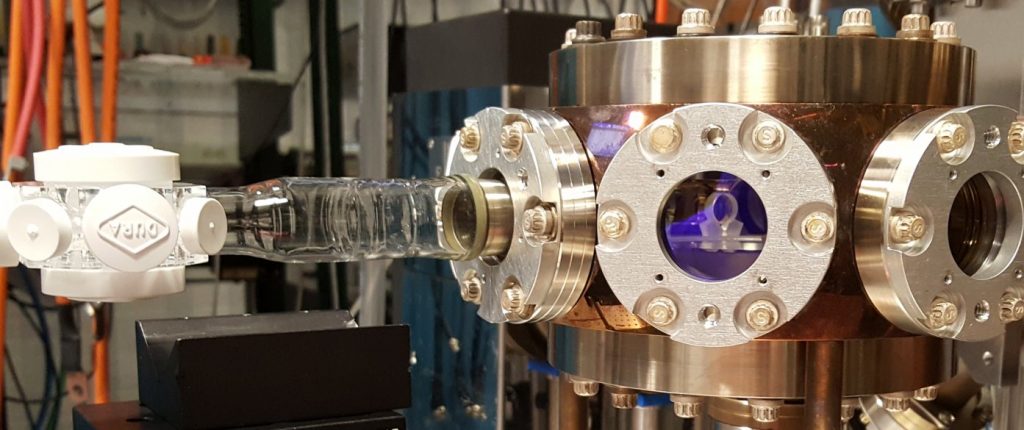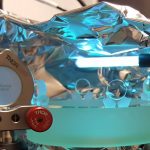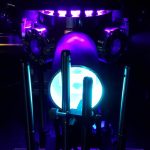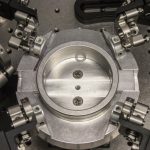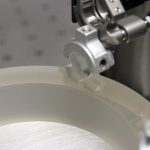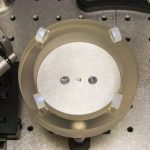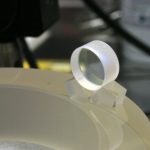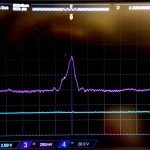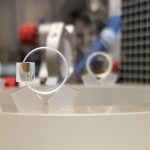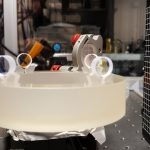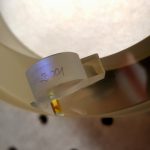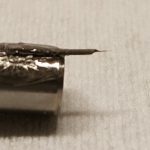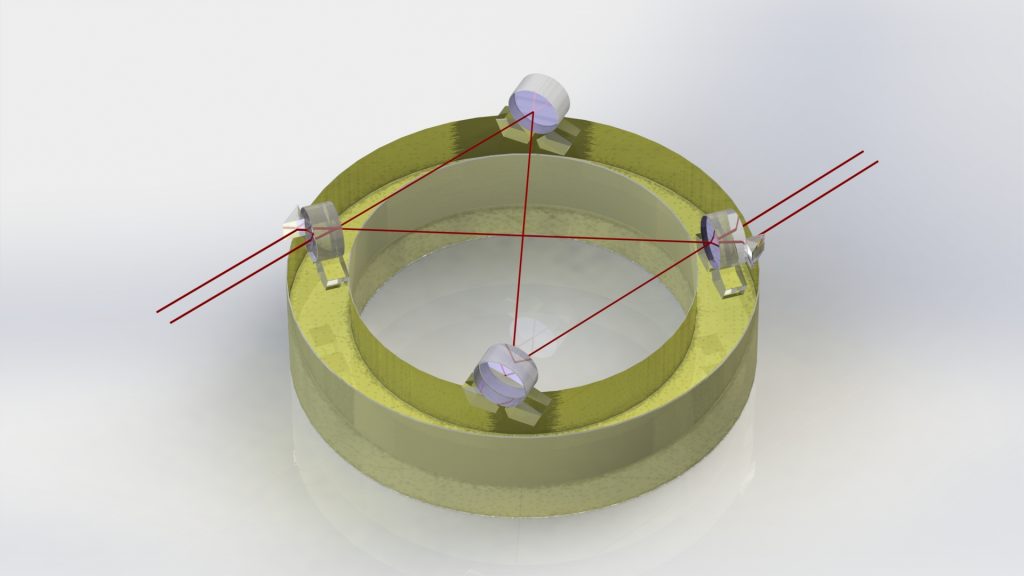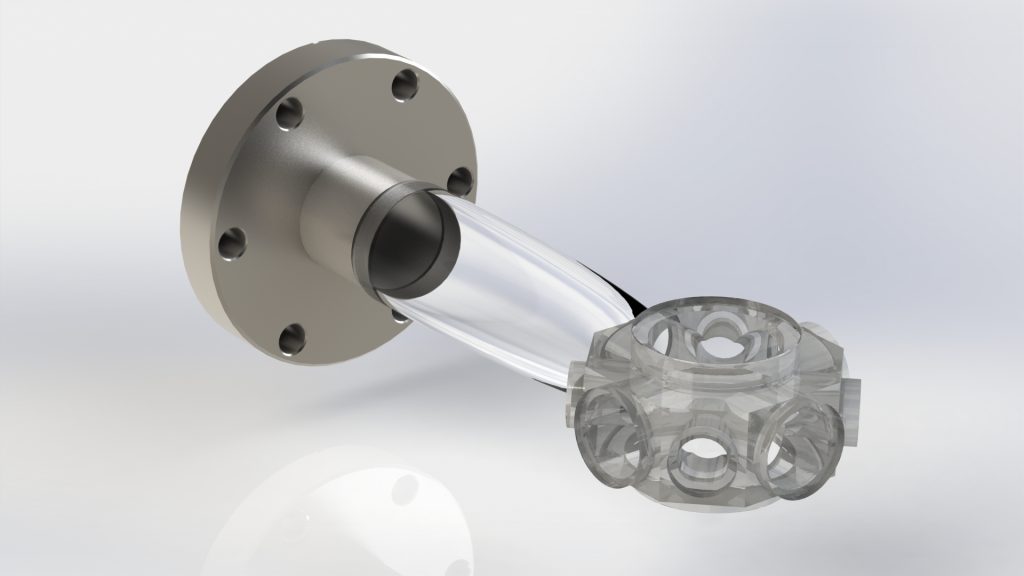We’re are now reliably creating degenerate Fermi gases of around 1 million lithium atoms in the crossed beam dipole trap in the 3DMOT chamber. At the moment this is a weakly-interacting Fermi gas that is mixture of the the lowest two hyperfine states, and a magnetic field of around 350 gauss. So far we’ve seen T/TFermi of about 0.4, but this is rather beside the point since we’ll be moving the atoms into a glass “science” cell at a temperature well above degeneracy. It’s nice to see the cooling process working so nicely, with a vacuum lifetime of almost a minute. It will be fun to eventually throw Li-7 back in the mix and cool both isotopes simultaneously, but for now we’ll continue the march to the ring trap in the science cell.
At the moment this is a weakly-interacting Fermi gas that is mixture of the the lowest two hyperfine states, and a magnetic field of around 350 gauss. So far we’ve seen T/TFermi of about 0.4, but this is rather beside the point since we’ll be moving the atoms into a glass “science” cell at a temperature well above degeneracy. It’s nice to see the cooling process working so nicely, with a vacuum lifetime of almost a minute. It will be fun to eventually throw Li-7 back in the mix and cool both isotopes simultaneously, but for now we’ll continue the march to the ring trap in the science cell.
Author Archives: Kevin Wright
Paper Published in EPL: SSH model in a 1D ring lattice
We’ve been working with the group of Chih-Chun Chien at UC Merced, investigating the feasibility of studying the SSH model with ultracold Fermions in a 1D ring lattice. They’ve come up with some interesting protocols for detecting localized edge states. We’ve been contributing analysis of the feasibility of the proposed experiments, and working on how to trap lithium-6 in lattices that look like the one shown below.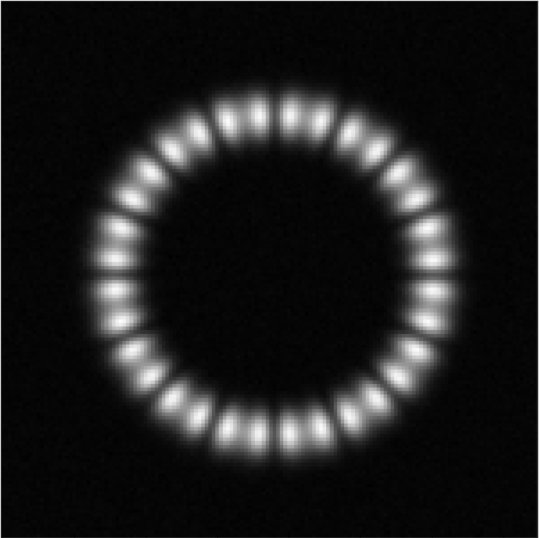 Protocols for dynamically probing topological edge states and dimerization with fermionic atoms in optical potentials Mekena Metcalf, Chen-Yen Lai, Kevin Wright, Chih-Chun Chien EPL 2017
Protocols for dynamically probing topological edge states and dimerization with fermionic atoms in optical potentials Mekena Metcalf, Chen-Yen Lai, Kevin Wright, Chih-Chun Chien EPL 2017
Preprint version: arXiv:1703.03735
Cavity and Cell Installation Completed
We’ve finished installing the bowtie cavity in the 3DMOT chamber, and attached our new fused silica “science” cell made by Precision Glassblowing. The windows have a graded-index surface-relief AR coating, done by Tel Aztec, and it’s really strange to see no reflections, and none of the angle-dependent chromatic effects characteristic of multilayer thin film AR coatings.
Preliminary tests of coupling to the cavity in-vacuum show that it is aligned within the chamber as intended, and confirmed that the linewidth is <100 kHz. We’ve already been able to lock the laser to the cavity using only piezo feedback on the fiber laser, in spite of the excess vibrations from the pumping station temporarily attached to the chamber. Full characterization of the cavity will have to wait until after the bakeout.
Assembly of the High-Finesse Bowtie Cavity
Alignment and assembly took most of the last 3 days, but went surprisingly smoothly. Preliminary measurements (in-air) show a cavity linewidth of about 100 kHz and a finesse of 10,000, exactly in line with predictions for the mirrors we chose. (The FSR is 1.05 GHz) Since we’ll be trapping atoms at the beam intersection, we verified that the cavity beams are coplanar (to within the accuracy we can measure) by monitoring losses from a sharp tungsten tip on a 3-axis translation stage. After an overnight UV/ozone cleaning, we’ll break vacuum in the main chamber and install the cavity and the new “science” cell tomorrow.
Jesse Evans’ Masters Thesis
Congratulations are in order for group member Jesse Evans, who successfully defended a Masters thesis on Construction of monolithic all-glass optical cavities for trapping ultracold atoms.
The novel optical assembly techniques he helped develop are going to allow us to build some rather special cavity-based dipole traps, such as the symmetric ring-bowtie depicted in the rendering above. That cavity will undergo final cleaning and installation in our 3DMOT chamber very soon. We’re waiting to break vacuum on the main chamber, since our custom fused silica “science cell” from Precision Glassblowing (rendering below) will be delivered next month, and we want to install them in one operation.

